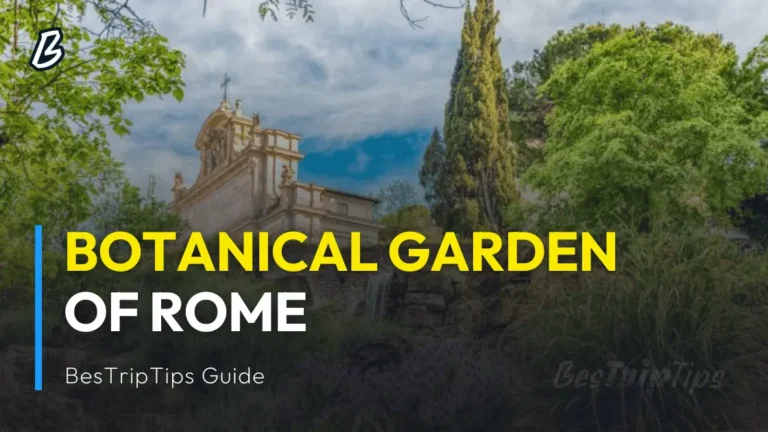Europe, a continent steeped in history and adorned with architectural marvels, boasts an array of magnificent castles that stand as timeless witnesses to bygone eras. From the fairytale-like spires of Neuschwanstein Castle in Germany to the formidable walls of Edinburgh Castle in Scotland, each fortress tells a tale of conquests, royalty, and cultural richness.
In this BesTripTips journey through the past, we invite you to discover the top 7 most beautiful castles in Europe that enchant their grandeur and offer a glimpse into the diverse narratives that have shaped the European landscape. Join us as we unravel the stories behind these iconic structures, exploring their architectural intricacies and delving into the historical tapestry that makes them the best of Europe’s castle heritage.
Neuschwanstein Castle, Germany
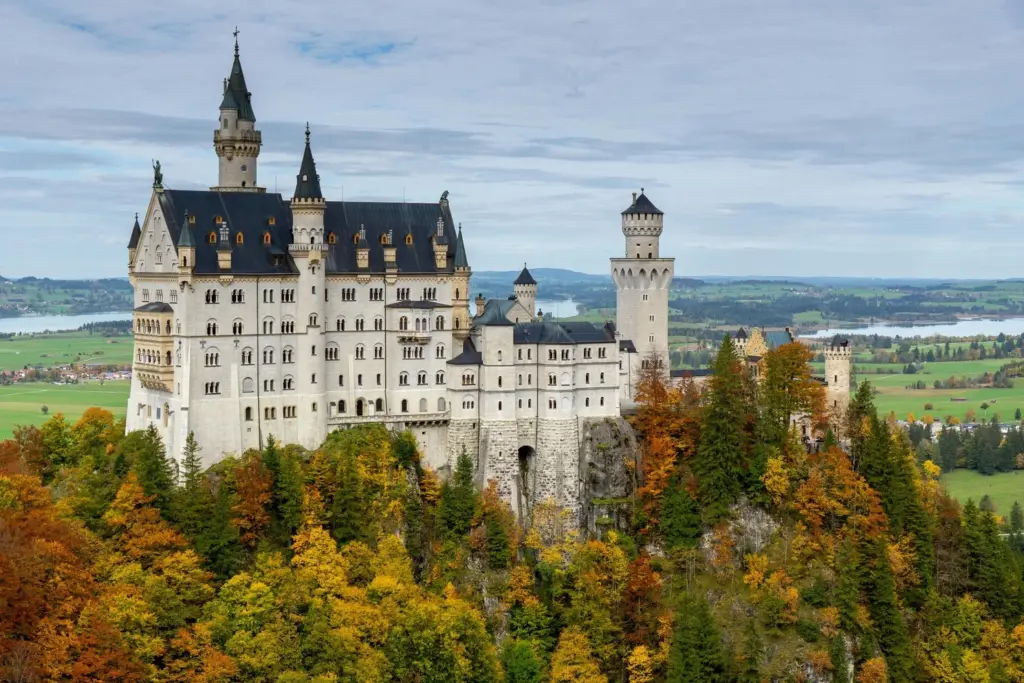
As our castle exploration begins, we find ourselves in the heart of Bavaria, Germany, where the iconic Neuschwanstein Castle stands proudly against the backdrop of the picturesque Alps. Perched atop a hill near the village of Hohenschwangau, this fairy-tale-like fortress captures the imagination with its spires and turrets, reminiscent of a dreamy medieval landscape.
Location and Architectural Marvel
Neuschwanstein Castle‘s location offers panoramic views of the surrounding landscapes, including the shimmering Alpsee lake. Built in the 19th century, the castle’s architecture blends Romanesque and Gothic styles, showcasing the vision of King Ludwig II, who sought to create a retreat that reflected Romanticism and medieval charm.
A Royal Dream Unveiled
The castle’s history intertwines with the eccentricities of King Ludwig II, who commissioned its construction as a personal refuge. Despite being an unfulfilled dream, Ludwig only lived in the castle briefly before his mysterious death. Neuschwanstein has become a symbol of German Romanticism and a testament to the king’s fascination with the medieval past.
A Popular European Attraction
Today, Neuschwanstein Castle attracts millions of visitors annually, drawn not only by its architectural splendor but also by its enchanting surroundings. Visitors can explore the lavishly decorated rooms, including the opulent Throne Room and the charming Singer’s Hall, adorned with vibrant frescoes that narrate Germanic sagas.
Chillon Castle, Switzerland
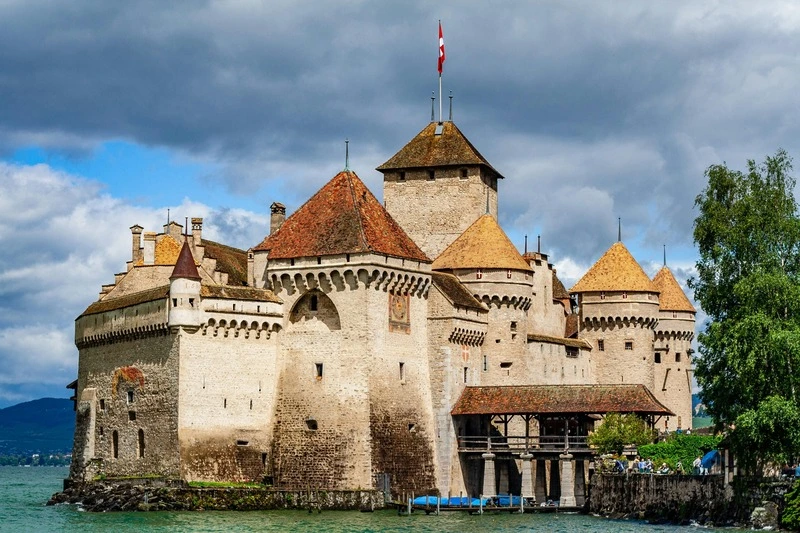
Leaving the enchanting landscapes of Germany, our castle odyssey takes us to the shores of Lake Geneva, where the mesmerizing Chillon Castle stands as a sentinel of Swiss history and romance. Nestled on a rocky outcrop near Montreux, this medieval fortress presents a captivating blend of natural beauty and architectural splendor.
Spectacular Setting on Lake Geneva
Chillon Castle’s strategic location on the shores of Lake Geneva provides a stunning backdrop and a tangible connection to the region’s historical significance. Chillon is a sight to behold, surrounded by the shimmering waters of the lake and the majestic Swiss Alps.
A Tapestry of Swiss History
With a history dating back to the Roman era, Chillon Castle has witnessed centuries of political intrigue, noble families, and artistic inspiration. Its dungeons, medieval halls, and the Chapel of St. George all witness the castle’s rich past, including the time it spent as a fortress, a residence, and even a prison.
Legendary Tales and Notable Residents
Chillon Castle is steeped in legendary tales, with its most famous story centering around the imprisonment of François de Bonivard. The castle also hosted illustrious guests, including Lord Byron, whose poetic tribute immortalized the castle’s allure.
Exploring Chillon Today
Visitors to Chillon Castle can embark on a captivating journey through its well-preserved halls, chambers, and courtyards. The castle’s museum showcases artifacts that bring its history to life, while the panoramic views from the towers offer a glimpse into the timeless beauty of Lake Geneva.
Peleș Castle, Romania
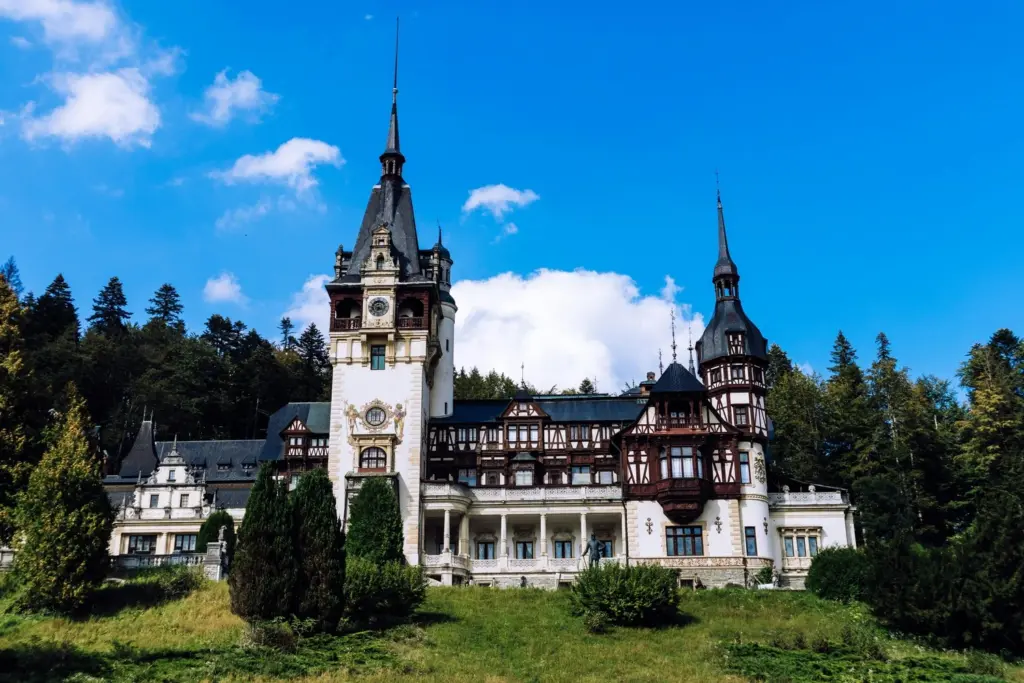
Our journey through the enchanting world of European castles continues eastward to the Carpathian Mountains, where the stunning Peleș Castle in Romania awaits. Tucked away in the scenic town of Sinaia, this Neo-Renaissance masterpiece is a testament to royal opulence and architectural finesse.
Regal Resplendence in the Carpathians
Peleș Castle, surrounded by the lush forests of the Carpathians, is a marvel of architectural prowess. Commissioned by King Carol I in the late 19th century, the castle’s design seamlessly blends German and Italian influences, creating an imposing and aesthetically pleasing royal residence.
A Royal Legacy
The history of Peleș Castle is intertwined with the Romanian monarchy, serving as the summer residence for King Carol I and subsequent monarchs. Its lavish interiors, adorned with exquisite woodcarvings, stained glass, and Murano crystal chandeliers, reflect the affluence and taste of its royal inhabitants.
Exploring Peleș’ Grandeur
Visitors to Peleș Castle can wander through its ornate rooms, each with a unique theme and decor. Highlights include the impressive Concert Hall, the intricately designed Turkish Salon, and the resplendent Royal Armory. The castle’s surroundings, including the stunning Pelisor Castle and the well-manicured gardens, add to the overall charm of the estate.
Cultural Significance and National Pride
Peleș Castle is not merely a symbol of architectural magnificence; it holds a special place in Romania’s cultural heritage. Its association with the monarchy and its role in the country’s history make it a source of national pride and a must-visit destination for those seeking a glimpse into Romania’s royal past.
Edinburgh Castle, Scotland

Our castle expedition now takes us to the rugged landscapes of Scotland, where the iconic Edinburgh Castle dominates the skyline of the historic capital city. Perched atop Castle Rock, this fortress has played a central role in Scotland’s turbulent history and symbolizes strength and resilience.
Dominating the Edinburgh Skyline
Edinburgh Castle’s commanding presence atop Castle Rock offers a strategic advantage and panoramic views of the city below. Its position has made it a natural fortress throughout the centuries, witnessing sieges, battles, and the ebb and flow of Scottish history.
A Fortress Steeped in History
The castle’s origins trace back to at least the 12th century, and its stone walls have seen the likes of Mary, Queen of Scots, and countless monarchs who shaped the destiny of Scotland. The Stone of Destiny, the Crown Jewels, and the medieval Great Hall are among the many historic treasures housed within its walls.
Highlights within the Castle Walls
Exploring Edinburgh Castle unveils a tapestry of historical and architectural wonders. The Crown Room, home to the Crown Jewels, showcases the opulence of Scottish royalty, while St. Margaret’s Chapel, the oldest surviving building in Edinburgh, provides a serene contrast.
Military Legacy and National Symbol
Edinburgh Castle’s military significance is as prominent as its historical one. The castle pays tribute to Scotland’s martial heritage, from the One O’clock Gun to the National War Museum. It remains an enduring symbol of the nation’s identity and pride.
Visitor Experience and Cultural Impact
Today, Edinburgh Castle welcomes millions of visitors annually. Its guided tours, vibrant events, and atmospheric surroundings transport visitors back in time, offering a glimpse into the lives of the people who shaped Scotland’s destiny within these formidable stone walls.
Prague Castle, Czech Republic
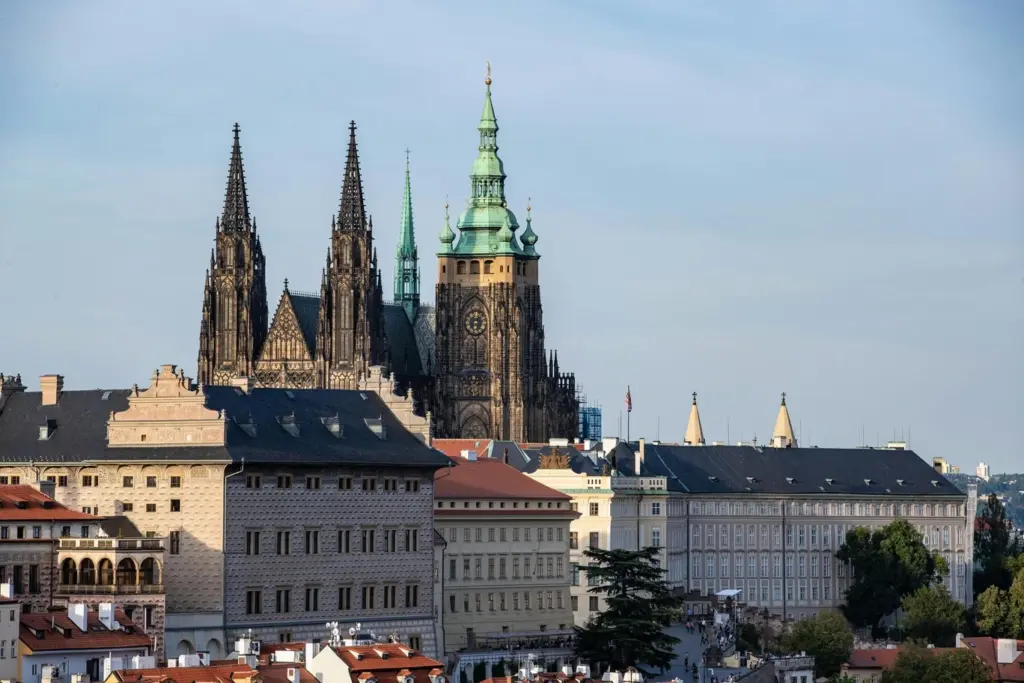
Our castle expedition leads us to the heart of Central Europe, where the imposing silhouette of Prague Castle graces the historic city of Prague. Perched on Castle Hill overlooking the Vltava River, this architectural masterpiece holds the title of the largest ancient castle in the world, offering a breathtaking panorama of the Czech capital.
Historical and Architectural Marvel
With its sprawling complex, Prague Castle has been a focal point of Czech history for over a millennium. Its architecture reflects a blend of styles, from Romanesque and Gothic to Renaissance and Baroque, mirroring the diverse historical periods it has weathered. St. Vitus Cathedral, a prominent feature within the castle grounds, adds to its grandeur.
A Tapestry of Czech History
Founded in the 9th century, Prague Castle has witnessed the reigns of Bohemian kings, Holy Roman Emperors, and Czech presidents. Its halls echo tales of political intrigue, royal celebrations, and religious ceremonies. The castle has played a pivotal role in shaping the cultural and political identity of the Czech Republic.
Points of Interest Within the Castle Walls
Exploring Prague Castle reveals a treasure trove of architectural gems. The Old Royal Palace, the Golden Lane, and the Powder Tower are just some highlights that captivate visitors. The stunning Vladislav Hall, adorned with a magnificent vaulted ceiling, is a testament to the castle’s architectural splendor.
Panoramic Views and Surroundings
The panoramic views from Prague Castle provide a breathtaking backdrop of the city, the Charles Bridge, and the distant hills. The castle complex also includes beautiful gardens, such as the Royal Garden and the South Gardens, inviting visitors to stroll amidst greenery and historical charm.
Cultural Legacy and Modern Relevance
Prague Castle continues to be a living symbol of Czech history and culture. Today, it hosts state events and cultural festivals and serves as the official residence of the President of the Czech Republic. Its role as an artistic hub and a symbol of national pride ensures its enduring significance.
Château de Chambord, France
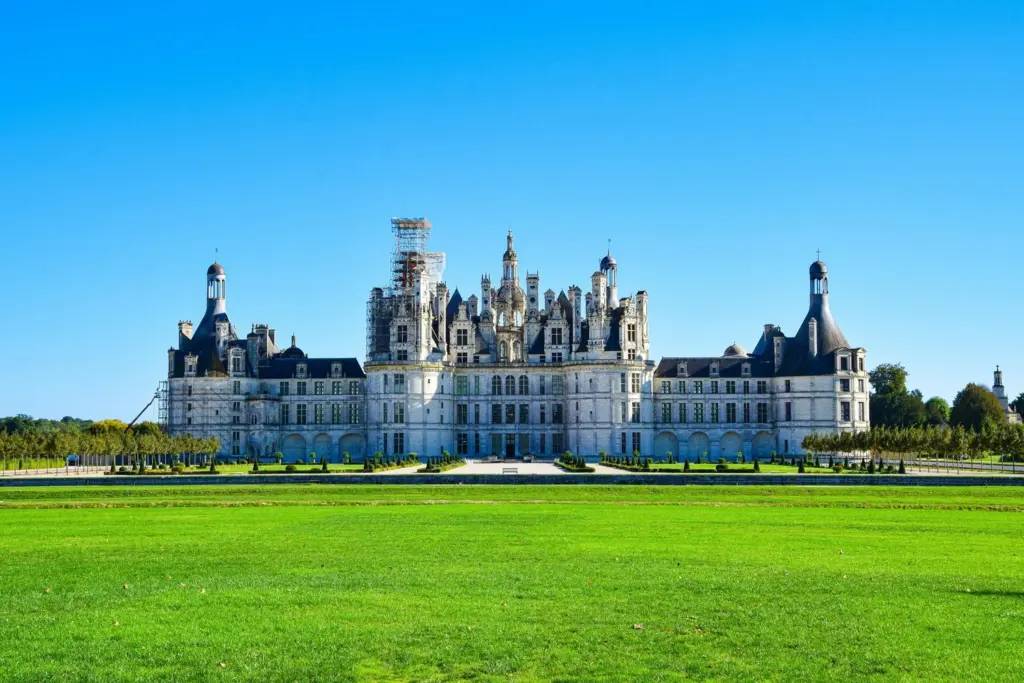
Now, we will explore the heart of the Loire Valley in France, where the majestic Château de Chambord rises like a fairytale castle against the lush landscape. Renowned for its distinctive French Renaissance architecture, this masterpiece is a testament to the luxury of the French monarchy.
Architectural Extravagance
Château de Chambord, built in the 16th century under the reign of King Francis I, is a marvel of French Renaissance design. Its iconic double-helix staircase thought to be designed by Leonardo da Vinci, and the intricate fusion of Gothic and Classical elements make it a unique and captivating structure.
Royal Connection and Historical Significance
Commissioned as a hunting lodge, Chambord’s grandeur served not only as a testament to the power of the French monarchy but also as a symbol of Francis I’s artistic patronage. Despite its intended use as a rural retreat, the castle’s colossal proportions and architectural splendor became an enduring symbol of royal prestige.
Exploring the Magnificence Within
Chambord’s interiors are adorned with lavish decor, including richly furnished rooms, ornate ceilings, and an extensive collection of period furniture. The double-helix staircase, a marvel of engineering and artistry, remains a focal point, leading visitors through the castle’s various levels.
Park and Surroundings
A vast hunting park surrounds the castle, showcasing the French affinity for landscape design. The park, with its expansive grounds, water features, and wildlife, adds to the overall charm of the Château de Chambord.
Cultural Legacy and Modern Appeal
Chambord’s cultural significance extends beyond its historical roots. Today, it stands as one of the most visited castles in France, drawing admirers from around the world. Its preservation and continued allure underscore its lasting impact on French culture and architectural heritage.
Hohenwerfen Castle, Austria
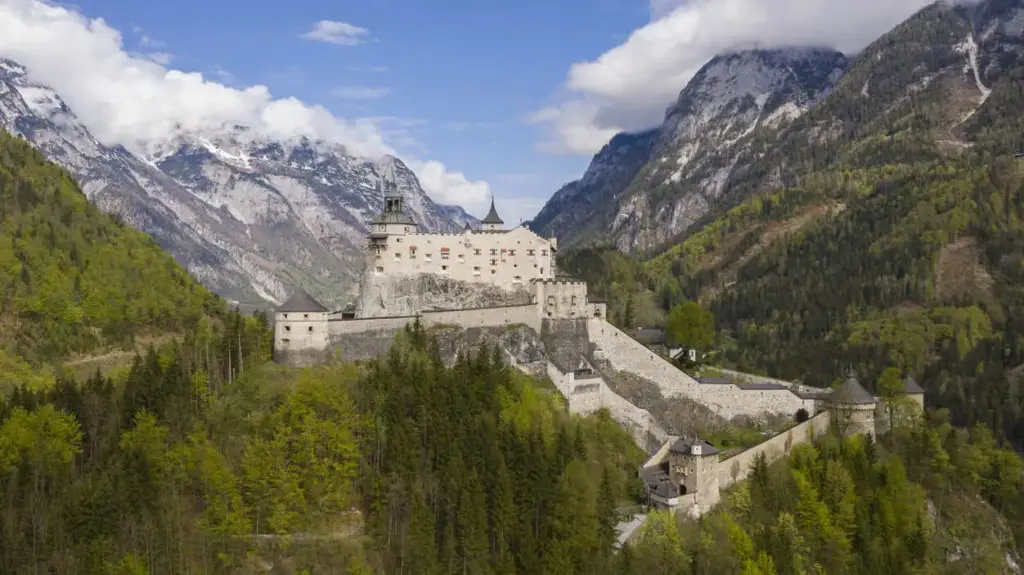
Our final castle beckons us to the breathtaking Austrian Alps, where Hohenwerfen Castle perches on a rocky outcrop, commanding awe-inspiring views of the surrounding mountains and valleys. With its strategic location and rich history, this medieval fortress offers a glimpse into Austria’s defensive past and cultural heritage.
A Picturesque Alpine Stronghold
Nestled in the Salzach Valley, Hohenwerfen Castle stands as a testament to medieval defensive architecture. The castle’s position on a steep rock outcrop provided strategic advantages and contributed to its picturesque and formidable appearance.
Defensive Fortress and Military History
Built-in the 11th century, Hohenwerfen Castle served as a strategic military outpost, protecting the region and controlling key trade routes. Over the centuries, it witnessed various conflicts and sieges, leaving behind a legacy steeped in military history.
Architectural Features and Notable Structures
The castle’s well-preserved structures include a fortified keep, watchtowers, and a drawbridge, showcasing the architectural ingenuity of its medieval builders. The Falconry Center within the castle grounds adds another layer of historical charm, offering insights into medieval hunting practices.
Spectacular Views and Surroundings
One of the highlights of Hohenwerfen Castle is the breathtaking panoramic view of the surrounding Alpine landscape. Visitors can climb the towers and battlements to enjoy vistas that stretch across the Salzach Valley, providing a captivating backdrop to the historical experience.
Cultural Events and Visitor Engagement
Hohenwerfen Castle goes beyond being a static historical site. Today, it hosts cultural events, medieval reenactments, and falconry shows, providing visitors with an immersive experience that brings the castle’s past to life. The castle’s role in Austria as a cultural venue ensures its continued relevance and appeal.
The 7 Most Beatiful Castles in Europe
Our journey through the corridors of Neuschwanstein, Chillon, Peleș, Edinburgh, Prague, Chambord, and Hohenwerfen Castles has transported us across time and borders, unveiling the captivating stories embedded in their stone walls. These European castles, each with unique charm and historical significance, collectively form a tapestry of Europe’s rich cultural heritage.
The Timeless Allure
What is it that makes these castles so irresistibly alluring? Is it the architectural brilliance that has withstood centuries or the historical narratives that echo through their halls? Perhaps the picturesque settings frame these fortresses, inviting visitors to step into a bygone era. The answer lies in amalgamating these elements, creating a timeless charm that transcends generations.
Architectural Marvels
From the fairytale spires of Neuschwanstein to the intricate details of Prague Castle, each fortress is a testament to its builders’ craftsmanship and artistic vision. The architectural diversity, ranging from Gothic and Renaissance to Romanesque and Baroque styles, showcases the evolution of European design over the centuries.
Historical Narratives Unveiled
Beyond their architectural splendor, these castles are living chronicles of Europe’s tumultuous past. They have witnessed royal intrigues, political upheavals, and cultural renaissances. Walking through their halls is like turning the pages of a history book, with tales of kings and queens, battles and celebrations etched into the very stones surrounding you.
Why Visit the 7 Most Beatiful Castles in Europe?
To step into these castles is to embark on a journey through time, to witness the grandeur of the past while surrounded by the beauty of the present. It’s an opportunity to connect with Europe’s cultural roots, marvel at architectural brilliance, and immerse oneself in the stories that have shaped the continent. So, these castles beckon if you seek the romance of medieval tales, the luxury of royal residences, or simply the pleasure of wandering through historic halls. At BesTripTips, we believe they are not merely monuments but gateways to Europe’s rich and multifaceted history. As you stand in their shadows, you become part of a narrative that spans centuries, a narrative waiting to be discovered and embraced. Visit these castles, let their allure captivate your imagination, and transport you to a world where history, architecture, and natural beauty converge in splendid harmony.

